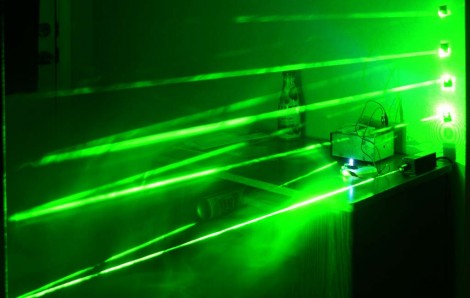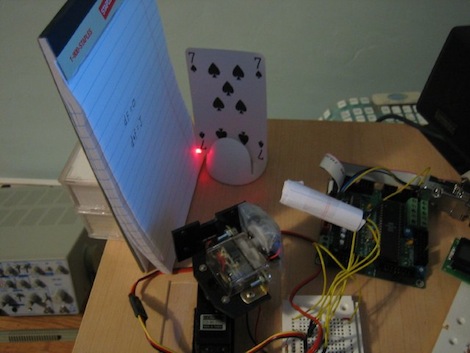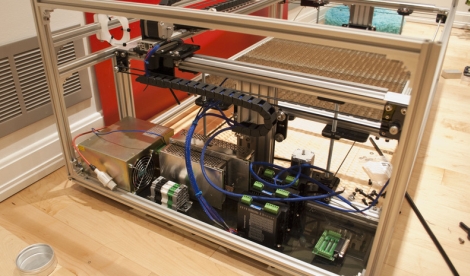![]()
Instructables user [PenfoldPlant] is a big fan of indoor rock climbing, and while watching others make difficult climbs, he has often wondered if he could follow the same route up the wall. Unfortunately, aside from watching the other climbers and hoping to remember the path they have taken, he found there isn’t much you can do to ensure that you have precisely replicated the climb.
He thought awhile and came up with a laser tracking system that can be used to record a climber’s ascent, then replay it any number of times. This allows climbers to be able to replicate other climbers’ paths as well as compete against one another in timed races.
This works much like the “ghost” feature found in most racing games, though the process is half manual/half automated. The initial ascent is recorded by manually tracing the climber’s route with a laser pointer as they climb. The path is recorded and then can be replayed, courtesy of the onboard Arduino.
It really is a neat system, and while it works pretty well already, we think there is still room for enhancement. It wouldn’t be extremely difficult to have the climber wear some sort of light beacon that could be tracked using a web cam or other recording device, taking the manual labor out of the equation. In that case however, we imagine the Arduino would need to be swapped out for something a touch more powerful.
Stick around for a quick video of the tracking system in action.
Continue reading “Laser Tracker Replays Competitive Rock Wall Climbs”
















